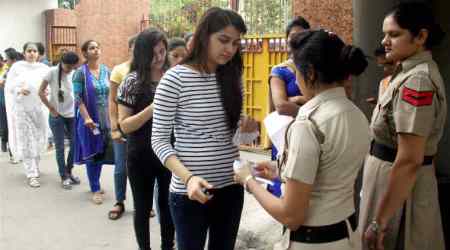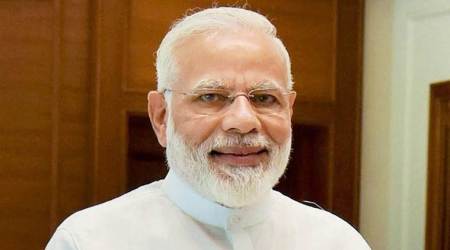 UPSC office in New Delhi. (File Photo)
UPSC office in New Delhi. (File Photo)
Few issues in civil service reform arouse more passion and acrimony than lateral entry into the Indian Administrative Service (IAS). It is talked about, off and on, both within the government and outside, but has not been acted upon. We believe it is an idea whose time has not only come, but one which is overdue. The case for lateral entry is strong.
First, the IAS has been designed for the pre-reform India of a dominant state. The logic of economic reforms that began in 1991 is for the state to yield space to the market; as we deepen reforms, it becomes even more imperative for the government to understand the impact of its policies on stakeholders — the private sector, the non-government sector and the larger public. The IAS officers, on the other hand, see the government only from within. Sure, there are efforts to reach out to the stakeholders, but is that an adequate substitute to having within the government itself, people who have “experienced” the government from the outside?
Second, IAS officers get recruited at a very young age when it is difficult to test potential administrative and judgement capabilities. Indeed, experience has shown that the IAS examination is prone to both, what statisticians call type I and type II errors; some who are potentially good administrators fail to make it, and some who do make it, fall short of the requirements. Mid-career lateral entrants with proven capabilities will help bridge this deficiency.
Third, career progression in the IAS is almost automatic. Notwithstanding sporadic efforts to introduce meritocracy, very few get weeded out for poor performance. The only penalty, if at all, for failing to make the grade, is fringe postings. Lateral entry is necessary to push the IAS out of their comfort zone and challenge them.
It is not as if lateral entry has not been tried out. It has, but only at the margins. Both the Central government and many state governments have appointed advisers and consultants on an ad-hoc basis, for fixed tenures or even on an open-ended basis. Indeed some of them, recruited into the Finance Ministry, the Reserve Bank, the erstwhile Planning Commission and more recently into public enterprises, have distinguished themselves. C. Rangarajan and Montek Singh Ahluwalia, just to name two, have been stellar successes. However, the larger experience from such lateral entry has not been happy. Lateral entrants have struggled to fit into “the system” and understand the processes and dynamics of government decision-making. They have complained of hostility from the IAS network which, they believe, sets them up for failure. “The system”, a metaphor for the IAS, in turn, sees lateral entrants as adversaries who have made their way in, not through an open competitive examination like they have, but because of privilege and connections.
What we propose, instead, is an institutionalised system of annual recruitment into the IAS of mid-career professionals from diverse career paths. They could be in the 43-46 years age group. And the qualifications should not be too prescriptive in order to privilege proven talent over paper qualifications. The Union Public Service Commission should design the examination to test analytical skills, maturity of judgement and personality traits. Lateral entrants too, like the regular recruits, should be allotted to state cadres, and their inter-se seniority should be determined in such a way that the interests of regular entrants and lateral entrants are balanced.
A distinguishing feature of the IAS, indeed one that is their claim to pre-eminence even among other civil services, is their field experience. This cutting-edge level exposure comes in very handy as IAS officers move up the ladder to policy-making at the highest levels. Some of the Delhi policy mandarins from outside the IAS have never seen a village school or a gram panchayat office. That is not just embarrassing; it is dysfunctional. The lateral entrants should, therefore, have mandatory “district immersion”, serving at least five of their first 10 years in field postings. The hard grind of such field postings will make lateral entry self-selecting, drawing in only those with commitment and aptitude. This proposed institutionalised entry will turn the IAS cadre top-heavy. This can be mitigated by weeding out a quarter of the poorest performing regular entrants at the end of 15 years so that they yield space for lateral entrants. Admittedly, such weeding out has to be done based on transparent and contestable criteria so that the rules of the game are known before the play starts.
Lateral entry will bring in much-needed outside experience, buffer the talent within the administration and challenge the IAS into continuous self-improvement. Since the lateral entrants will come through an open competitive examination, they will be as much a part of “the system” as the regular entrants, giving no scope for the adversarial relationship seen with ad-hoc lateral entrants. Besides, the criticism that lateral entrants cherry-pick their jobs, enjoy a system of revolving doors, come to burnish their CVs, or in some cases even to promote private interests from within the government, will have no ground.
Institutionalised lateral entry should be complemented with allowing regular IAS officers to specialise in sectors over time as well as encouraging them to work outside the government for limited periods. This will enable them to compete on an equal footing with lateral entrants.
We want to emphasise that we should not throw away the baby with the bathwater. There is a lot to be said for continuing to recruit young people into the IAS. They bring in youthful spirit, raw enthusiasm and unspoilt enterprise into administration. Many of the major programmes that have been mainstreamed across the country such as the mid-day meal, the employment guarantee scheme or even the right to information are the brainchild of sporadic experiments by these young IAS officers somewhere in the vast hinterland of the country.
Yet, an institutionalised lateral entry into civil service will help the government have the best of both youth and experience and take the system closer to the goal of “minimum government, maximum governance”.







